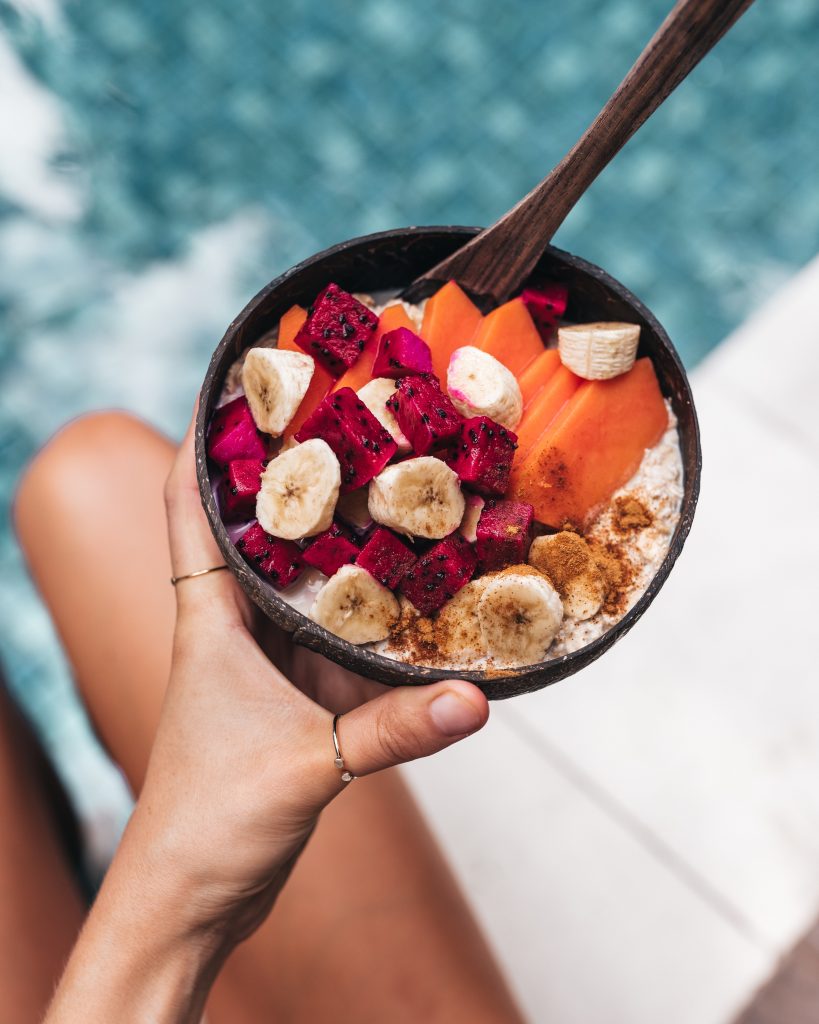This post contains affiliate links. Click here to read my affiliate policy.
Last Updated on August 26, 2022

Things like rice, pasta, cereal, and bread might taste great, but consuming too many refined (white) gains on a daily basis can be bad for your health. As refined grained break down into sugar, eating them all the time can increase your weight, cause inflammation, and heighten your risk of becoming overweight and developing diabetes. Since foods like those described above are delicious, giving them up altogether is often difficult to master. That’s why it is recommended that you eat more whole-grains instead.
Refined Vs. Whole-Grains
Grains are seeds derived from both grass-like and non-grass-like plants such as corn, wheat, rice, quinoa, buckwheat, and amaranth. There are essentially 3 parts to grains including the bran, endosperm, and germ. The bran is the outer shell that is filled with key minerals, fiber, and antioxidants. The endosperm is the middle part of the grain which is comprised of carbs. The germ is the inner layer where you’ll find vitamins, minerals plant compounds, and protein. Refined carbs, however, are processed and, therefore, are only made up of endosperm (carbs) making them the least healthy option for your diet.
Getting Your Daily Dose
Now that you have a clear understanding of the differences between whole-grains and refined grains, chances are you want to make the right choice. You don’t have to give up eating bread, rice, pasta, and cereal altogether. Instead, you must learn how to incorporate more whole grains into your diet for better all-over nutrition. Below are some suggestions on how to do this:
- Switch to Whole-Grain Cereal – Cereal is a common go-to breakfast. However, many of the most popular types are made from refined grains. To get more whole-grains in your diet you can simply switch to whole-grain cereals. There are plenty of brands that offer delicious whole-grain options including cold cereals made with whole grains, muesli, oats, and amaranth. Whether you enjoy a bowl of brown rice puffs with granola or a bowl of oatmeal flavored with cinnamon, blueberries, or cinnamon, eating a bowl each morning increases your whole-grain intake.
- Brown Rice and Quinoa Instead of White Rice – Rice is a common side dish served in a diverse set of cultures and cuisines. White rice, however, is nothing but empty carbs that breakdown into sugar and damage your body. Some healthier options would be brown rice and/or quinoa. Both are made from whole-grains and packed with key vitamins, minerals, fiber, and nutrients your body needs to function. Use these in place of white or yellow rice in your meals for the week. You can spice up the sometimes bland or grainy taste by cooking them with healthy oils, adding seasonings, or combining them with beans or veggies just as you would with white rice.
- Enjoy Whole-Grain Pasta – You don’t have to sacrifice your love of soup or Italian dishes like spaghetti, lasagna, or ravioli to reduce your intake or refined grains. All you need to do is switch to whole-grain pasta. There is pasta made from buckwheat, spelt, quinoa, whole-wheat, and brown rice that you can eat instead.
- Add it to Your Smoothies – Another way to increase your intake of whole-grains is to add it to your smoothies. The idea might sound gross, however, it’s actually very popular and tastes great. You can cook oatmeal or barley and add it to your smoothie, sprinkle a bit of whole-wheat flour into your smoothie, or add ground flaxseeds to the mix.
- Whole-Grain Flours Taste Great in Baking – Whether you prefer fresh bread, muffins, cakes, cookies, or other yummy baked goods, you can add whole-grain flour to the mix and make them healthier to eat (while also increasing your daily consumption). There are several types of whole-grain flours for you to experiment with including barley, brown rice, millet, quinoa, rye, and amaranth, to name a few. Play around with a few to determine which ones taste the best in your favorite baked goods.
If you want to maintain a healthy weight, boost your metabolism, or increase your intake of key nutrients, minerals, proteins, and vitamins necessary to live a happy and healthy lifestyle, you’ll need to increase your consumption of healthy options like whole-grains. Getting at least 3-5 ounce servings every day will improve your all-over health. If you’re having a hard time mastering this, using the recommendations above should help you get there.

